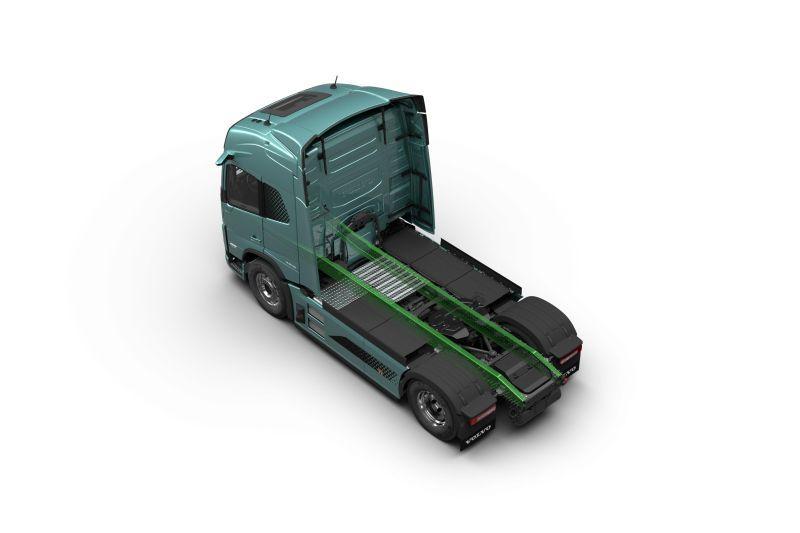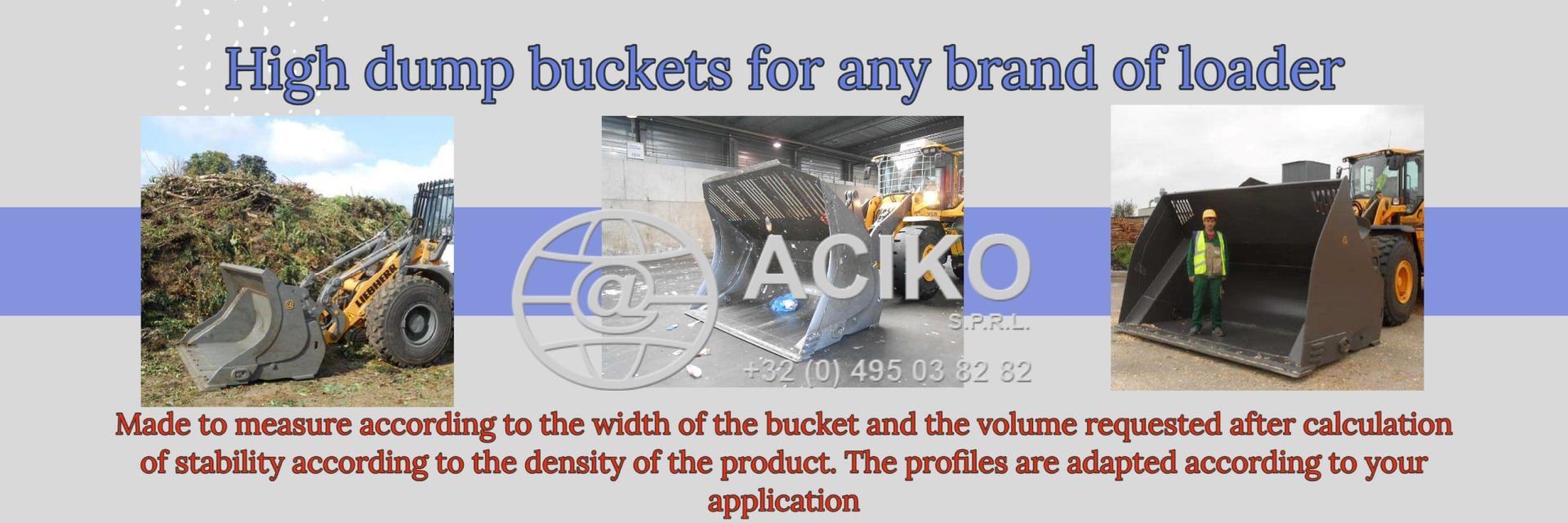Volvo Trucks ramps up the use of low-CO2-emission steel
 28/10/24-FR-English-NL-footer
28/10/24-FR-English-NL-footer
Volvo Trucks augmente l'utilisation d'acier à faible émission de CO2
 Image- VOLVO Trucks
Image- VOLVO Trucks
Volvo augmente l'utilisation d'acier à faible émission de CO2* dans ses camions. Cet acier est produit à partir de matériaux recyclés et d'énergie non fossile et sera utilisé dans des dizaines de milliers de camions Volvo à partir de l'année prochaine.
Volvo Trucks augmente l'utilisation d'acier à faible émission de CO2
Les longerons de châssis de milliers de camions Volvo seront construits avec de l'acier à faible émission de CO2.
Volvo augmente désormais l'utilisation d'acier à faible émission de CO2 dans ses camions. Volvo a été le premier constructeur de camions au monde à introduire ce type d'acier dans ses camions électriques en 2022. L'entreprise étend désormais l'utilisation d'acier à faible émission de CO2 à toutes les chaînes cinématiques.
Le nouvel acier est produit par l'entreprise sidérurgique suédoise SSAB et appelé SSAB Zero. Il est fabriqué à partir de matériaux recyclés et produit à l'aide d'électricité et de biogaz non fossiles. En conséquence, le CO2 est réduit d'environ 80 % par rapport à la production d'acier conventionnel à partir d'énergie fossile.
L'année prochaine, les longerons de châssis de près de 12 000 camions Volvo FH et FM seront fabriqués en acier à faibles émissions de CO2. Cela permettra d'économiser 6 600 tonnes d'équivalent CO2**. À mesure que la disponibilité de l'acier à faibles émissions de CO2 augmente, il sera introduit dans davantage de modèles de camions ainsi que dans d'autres pièces du camion.
« Il s'agit d'une étape supplémentaire vers notre vision zéro émission. L'acier est l'un des principaux matériaux de nos camions. Nous cherchons également à remplacer d'autres matériaux, tels que l'aluminium et le plastique, par des alternatives à faibles émissions. Nous sommes fiers d'être les pionniers du secteur en matière de matériaux durables pour nos camions », déclare Jan Hjelmgren, vice-président senior de la gestion des produits et de la qualité chez Volvo Trucks.
La moitié du camion est en acier
Le potentiel de réduction des émissions de CO2 est élevé puisque près de la moitié du camion est en acier (47 % d'un camion diesel Volvo FH), et il représente environ 44 % des émissions de CO2 de la production (du berceau à la porte) sur les 21 tonnes d'équivalent CO2 totales du diesel Volvo FH.
Le groupe Volvo collabore avec plusieurs fournisseurs autour de l'acier à faibles émissions de CO2. L'acier à faibles émissions de CO2 sera un complément important à l'acier traditionnel et recyclé utilisé dans les camions Volvo.
Volvo Trucks s'est engagé à respecter l'accord de Paris et à atteindre zéro émission nette de gaz à effet de serre dans la chaîne d'approvisionnement d'ici 2040 au plus tard.
« Nous nous efforçons en permanence de minimiser davantage notre empreinte climatique. Nous nous dirigeons également vers une plus grande circularité dans nos opérations et nos camions. Beaucoup de nos usines, transports et concessionnaires fonctionnent aujourd'hui à l'énergie renouvelable », déclare Jan Hjelmgren.
Les principaux matériaux utilisés dans un camion diesel Volvo FH sont l'acier (47 %), la fonte (26 %), les polymères (11 %) et l'aluminium (8 %). Ils représentent respectivement 44 %, 26 %, 14 % et 8 % des émissions de CO2 de la production (du berceau à la porte) sur les 21 tonnes d'équivalent CO2 totales du diesel Volvo FH.
* L'acier à faibles émissions de CO2 est un acier avec une réduction significative du CO2 (80 % ou plus) du berceau à la porte
** Les équivalents CO2 incluent toutes les émissions de gaz à effet de serre, y compris le méthane par exemple
NJC.© Info VOLVO Trucks
------------------------------------------------------------------------------------------------------------------
 28/10/24-English
28/10/24-English
Volvo Trucks ramps up the use of low-CO2-emission steel
 Image- VOLVO Trucks
Image- VOLVO Trucks
Volvo is increasing the use of low-CO2-emission steel* in its trucks. This steel is produced with recycled material and fossil-free energy and will be used in tens of thousands of Volvo trucks starting next year.
Volvo Trucks ramps up the use of low-CO2-emission steel
The frame rails in thousands of Volvo trucks will be built with low-CO2-emission steel.
Volvo is now ramping up the use of low-CO2-emission steel in its trucks. Volvo was the world’s first truck manufacturer to introduce this type of steel in its electric trucks in 2022. Now the company is expanding the use of low-CO2-emission steel to include all drivelines.
The new steel is produced by the Swedish steel company SSAB and called SSAB Zero. It is made from recycled material and produced using fossil-free electricity and biogas. As a result, CO2 is reduced by around 80% compared to the production of conventional steel using fossil energy.
Next year, the frame rails in around 12,000 Volvo FH and FM trucks will be made of low-CO2-emission steel. This will result in savings of 6,600 tons of CO2 Equivalents**. As the availability of low-CO2-emission steel increases, it will be introduced in more truck models as well as in other parts of the truck.
“This is an additional step towards our zero emissions vision. Steel is one of the main materials in our trucks. We are also looking to exchange other materials, such as aluminium and plastic, to low emission alternatives. We are proud to lead the way in the industry when it comes to sustainable material in our trucks,” says Jan Hjelmgren, Senior Vice President Product Management and Quality, Volvo Trucks.
Half of the truck consists of steel
The potential for lowering CO2 emissions is high as almost half of the truck consists of steel (47% of a Volvo FH diesel truck), and it represents about 44% of the CO2 emissions from the production (cradle to gate) out of the total 21 tons CO2 Equivalents for the Volvo FH diesel.
Volvo Group is collaborating with several suppliers around low-CO2-emission steel. Low-CO2-emission steel will be an important complement to the traditional and recycled steel used in Volvo’s trucks.
Volvo Trucks is committed to the Paris agreement and to achieving net-zero greenhouse gas emissions in the supply chain by 2040, at the latest.
“We are continuously striving to further minimize our climate footprint. We are also moving towards greater circularity in both our operations and our trucks. Many of our factories, transports and dealers are today running on renewable energy,” says Jan Hjelmgren.
The main materials in a Volvo FH diesel truck are steel (47%), cast iron (26%), polymers (11%) and aluminium (8%). They stand for around 44%, 26%, 14% and 8% of the CO2 emissions from the production (cradle to gate) out of the total 21 tons CO2 Equivalents for the Volvo FH diesel.
* Low-CO2-emission steel is a steel with a significant reduction of CO2 (80% or more) from cradle to gate
** CO2 Equivalents includes all greenhouse gas emissions including e.g methane
NJC.© Info VOLVO Trucks
-------------------------------------------------------------------------------------------------------------
 28/10/24-NL
28/10/24-NL
Volvo Trucks breidt het gebruik van staal met lage CO2-uitstoot uit
 Image- VOLVO Trucks
Image- VOLVO Trucks
Volvo breidt het gebruik van staal met lage CO2-uitstoot* in zijn vrachtwagens uit. Dit staal wordt geproduceerd met gerecycled materiaal en fossielvrije energie en zal vanaf volgend jaar in tienduizenden Volvo-vrachtwagens worden gebruikt.
Volvo Trucks breidt het gebruik van staal met lage CO2-uitstoot uit
De chassisbalken in duizenden Volvo-vrachtwagens worden gebouwd met staal met lage CO2-uitstoot.
Volvo breidt nu het gebruik van staal met lage CO2-uitstoot in zijn vrachtwagens uit. Volvo was in 2022 de eerste vrachtwagenfabrikant ter wereld die dit type staal in zijn elektrische vrachtwagens introduceerde. Nu breidt het bedrijf het gebruik van staal met lage CO2-uitstoot uit naar alle aandrijflijnen.
Het nieuwe staal wordt geproduceerd door het Zweedse staalbedrijf SSAB en heet SSAB Zero. Het is gemaakt van gerecycled materiaal en geproduceerd met fossielvrije elektriciteit en biogas. Hierdoor wordt de CO2 met ongeveer 80% verminderd in vergelijking met de productie van conventioneel staal met behulp van fossiele energie.
Volgend jaar worden de frame rails in ongeveer 12.000 Volvo FH en FM trucks gemaakt van staal met een lage CO2-uitstoot. Dit zal resulteren in een besparing van 6.600 ton CO2-equivalenten**. Naarmate de beschikbaarheid van staal met een lage CO2-uitstoot toeneemt, zal het in meer truckmodellen en in andere onderdelen van de truck worden geïntroduceerd.
"Dit is een extra stap in de richting van onze visie op nul emissies. Staal is een van de belangrijkste materialen in onze trucks. We willen ook andere materialen, zoals aluminium en kunststof, vervangen door alternatieven met een lage emissie. We zijn er trots op dat we vooroplopen in de industrie als het gaat om duurzaam materiaal in onze trucks", aldus Jan Hjelmgren, Senior Vice President Product Management and Quality, Volvo Trucks.
De helft van de vrachtwagen bestaat uit staal
Het potentieel voor het verlagen van de CO2-uitstoot is groot, aangezien bijna de helft van de vrachtwagen uit staal bestaat (47% van een Volvo FH dieseltruck) en het ongeveer 44% van de CO2-uitstoot van de productie (van wieg tot poort) vertegenwoordigt van de totale 21 ton CO2-equivalenten voor de Volvo FH diesel.
Volvo Group werkt samen met verschillende leveranciers rond staal met een lage CO2-uitstoot. Staal met een lage CO2-uitstoot zal een belangrijke aanvulling zijn op het traditionele en gerecyclede staal dat wordt gebruikt in Volvo's vrachtwagens.
Volvo Trucks zet zich in voor het klimaatakkoord van Parijs en om uiterlijk in 2040 netto nul broeikasgasemissies in de toeleveringsketen te bereiken.
"We streven er voortdurend naar om onze klimaatvoetafdruk verder te minimaliseren. We bewegen ook naar meer circulariteit in zowel onze activiteiten als onze vrachtwagens. Veel van onze fabrieken, transporten en dealers draaien tegenwoordig op hernieuwbare energie", zegt Jan Hjelmgren.
De belangrijkste materialen in een Volvo FH dieseltruck zijn staal (47%), gietijzer (26%), polymeren (11%) en aluminium (8%). Ze vertegenwoordigen ongeveer 44%, 26%, 14% en 8% van de CO2-uitstoot van de productie (van wieg tot poort) van de totale 21 ton CO2-equivalenten voor de Volvo FH diesel.
* Staal met een lage CO2-uitstoot is een staalsoort met een aanzienlijke vermindering van CO2 (80% of meer) van wieg tot poort
** CO2-equivalenten omvatten alle broeikasgasemissies, inclusief bijvoorbeeld methaan
NJC.© Info VOLVO Trucks
----------------------------------------------------------------------------------------------------------------
Date de dernière mise à jour : 25/10/2024
















